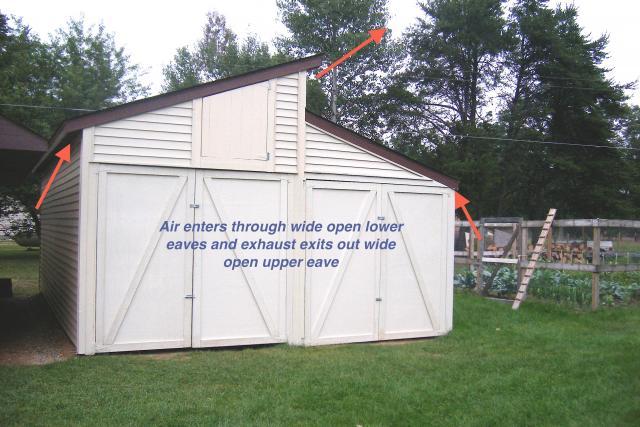As some may know I buy both the Practical Poultry mag and the Back Yard poultry mag. I also have been buying the Hobby Farms, "Chickens" magazine.
Well it would appear that there is a difference of opinion by the so called experts on heating the coop.
The last issue of Back Yard Poultry article was against heating saying it was not necessary.
NOW the newest issue of "Chickens" recommends using heat lights, to keep things dry. I have used heat lights but found they did nothing but create a humid coop. Ice crystals formed on the walls. Chickens as you know do not sweat but exhale a lot of humidity like a dog through their mouths.
Also the article mentioned using "insulation". I am slowly adding this as time allows.
There is one difference between these articles. The BYP article had an author who is in Virginia. The "Chickens" article was from visits to Colorado. Which of course gets colder than Virginia, as does where I live in NY.
As if we newbies are not confused enough. One thing both did mention is keeping things dry. Humidity low. So how to do that? What I will be doing is dumping another bale of wood shavings in the coop and as the "Chickens" article stated dumping some extra DE into the mix. I also bought two Thermometers from TSC that have humidity gauges. So we shall see how it goes.
The "Chickens" article did mention the Vaseline thing for preventing frost bitten combs but my experience is you'll have to apply it every single night and then it may not work. That was my experience last year and it doesn't look good this year either. I'm going to try Bag balm and see if that helps. As for frost bitten toes. I've seen it recommended to use 2x4's with the 4 side up so the birds have to keep toes under their feathers when they roost. I haven't seen any lost toes yet, so I haven't modified the roosts but will eventually.
I didn't think I'd want it to snow but snow is a good insulator, so I've changed my mind. Last year at this time we had over 50". That's over 4 feet of snow in the month of December alone. Last years total was 179" or nearly 15 feet.
For me all this information does is make it a personal decision to heat or not to heat and the "experts" advice to heat or not to heat useless. I think I'll switch to Rosecomb breeds and develop a Delaware with rosecombs since they are my best layers. Really my only problem has been frostbitten combs on my roosters.
I wish you sanity,
Rancher.
Well it would appear that there is a difference of opinion by the so called experts on heating the coop.
The last issue of Back Yard Poultry article was against heating saying it was not necessary.
NOW the newest issue of "Chickens" recommends using heat lights, to keep things dry. I have used heat lights but found they did nothing but create a humid coop. Ice crystals formed on the walls. Chickens as you know do not sweat but exhale a lot of humidity like a dog through their mouths.
Also the article mentioned using "insulation". I am slowly adding this as time allows.
There is one difference between these articles. The BYP article had an author who is in Virginia. The "Chickens" article was from visits to Colorado. Which of course gets colder than Virginia, as does where I live in NY.
As if we newbies are not confused enough. One thing both did mention is keeping things dry. Humidity low. So how to do that? What I will be doing is dumping another bale of wood shavings in the coop and as the "Chickens" article stated dumping some extra DE into the mix. I also bought two Thermometers from TSC that have humidity gauges. So we shall see how it goes.
The "Chickens" article did mention the Vaseline thing for preventing frost bitten combs but my experience is you'll have to apply it every single night and then it may not work. That was my experience last year and it doesn't look good this year either. I'm going to try Bag balm and see if that helps. As for frost bitten toes. I've seen it recommended to use 2x4's with the 4 side up so the birds have to keep toes under their feathers when they roost. I haven't seen any lost toes yet, so I haven't modified the roosts but will eventually.
I didn't think I'd want it to snow but snow is a good insulator, so I've changed my mind. Last year at this time we had over 50". That's over 4 feet of snow in the month of December alone. Last years total was 179" or nearly 15 feet.
For me all this information does is make it a personal decision to heat or not to heat and the "experts" advice to heat or not to heat useless. I think I'll switch to Rosecomb breeds and develop a Delaware with rosecombs since they are my best layers. Really my only problem has been frostbitten combs on my roosters.
I wish you sanity,
Rancher.







